Best Perennial Flowers for Your Garden
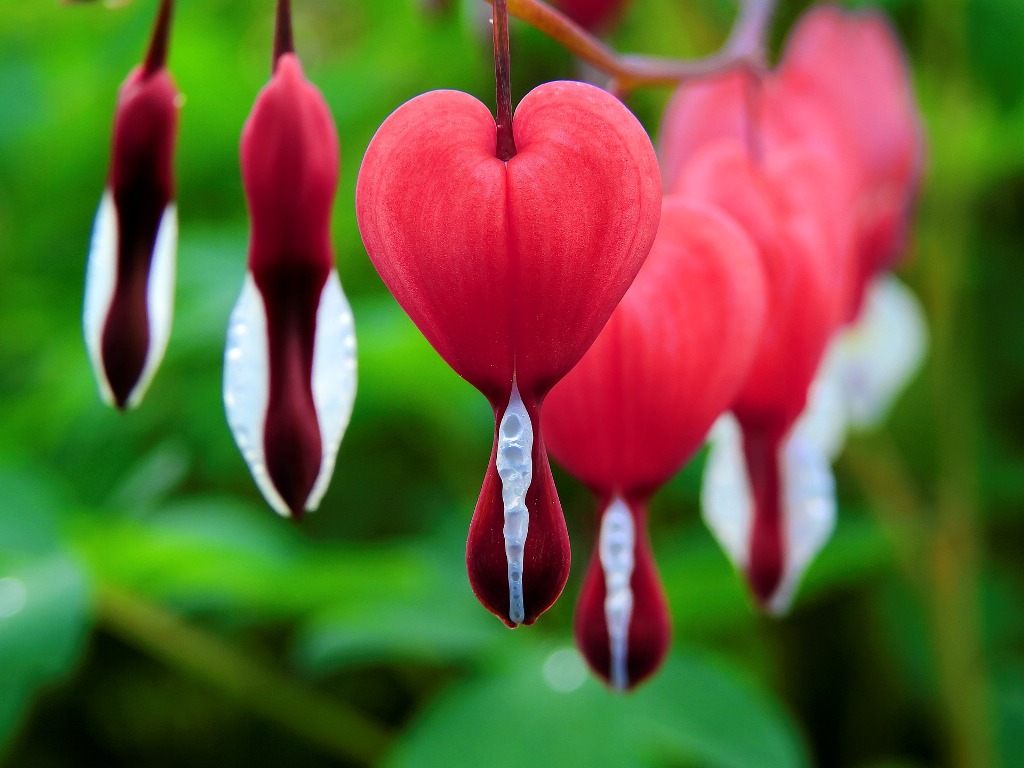
Almost everyone loves flowers. None would spot a person who hates flower. Flowers on earth has the potential to attract everyone on the globe. If you can have such flowers in your garden, think about the uniqueness. Yes, implementing flowers in your garden offers elegance and beauty. Yet, many get concerned about the variety they buy. It needs to be long-lasting and worth buying. To all who wish to afford flowering plants at a reasonable cost and that lasts longer, hold on! This article is for you. Well, perennial plants are the ones that we are speaking about. Perennials can live longer than 2 years. They can produce flowers every year. Perennials are sturdy, drought-resistant, and safer for anyone who handles it. To find the best perennials flowering plants, you can buy, read till the end.
List of Best Perennial Flowers
1. Coneflower
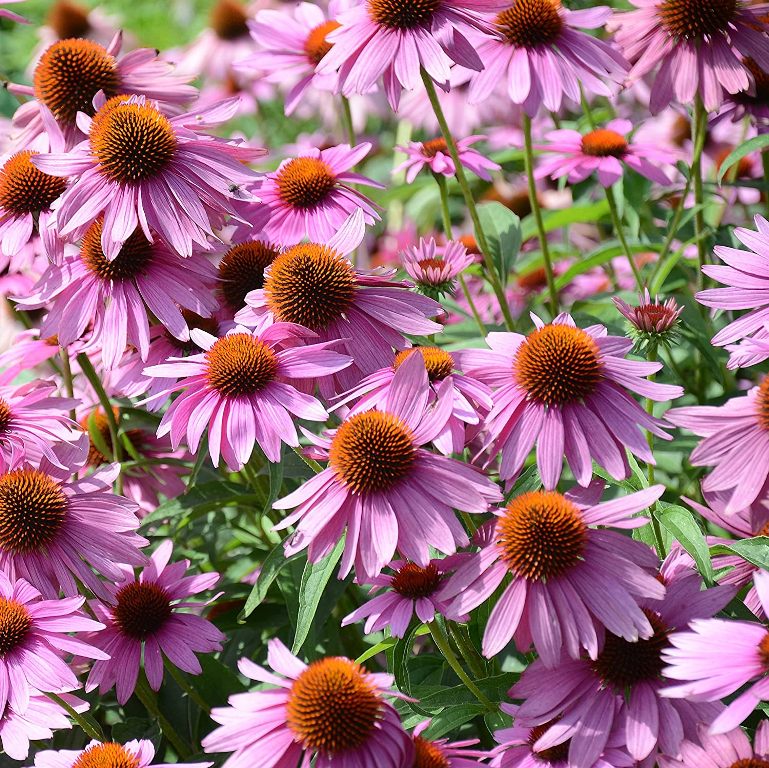
Family – Asteraceae
Genus – Echinacea
Coneflower is native to the Eastern United States that provides a tall background of around 5 feet in height. Generally, planting purple Coneflower gives elegance to your garden, attracting bees and butterflies. Ultimately, they help in pollination. Coneflowers can be grown best in any type of soil, even with poor conditions. The only difference is when you grow it in rich soil, blooms will be bright. Whereas, when you are planting it in poor soil, you get less bright flowers. Yet, the rest of the growth and development of plant remain the same. Hence, it is no wonder that it can grow in both rich and poor soil.
Coneflowers generally need 6 hours of full sun. It is highly suitable in Eastern hemispheres. Whereas, if you need to grow in western areas, it is possible. However, the quality and characteristics may differ. Means, the performance of the flower may vary from a range of full to partial sun and half shade requirement.
Collecting the seeds of Coneflower is also easy. You can place a brown paper bag over the seed head and start collecting it. Most of the professional growers believe that stratification of the seeds produces more bloom than the formal approaches. Also, they grow on the principle of root division. It cannot be done in the young plant. They don’t have much extensive root systems.
Carrying coneflowers is also straight forward, as it does not need much care. Ordinarily, they are drought resistant. During rainy seasons, additional watering is not necessary as the available water itself is sufficient. During dry seasons, it is recommended to water once a week.
You can apply only a limited fertilizer because the usage of more fertilizers on it doesn’t create much impact on these plants. The usage of lesser fertilizer is far enough for its development. Only if the quality and the development of the flowers is poor, you can go on with fertilizer implementation. Rest of the time, it is not mandatory for you to use fertilizers. Here, using a natural compost or organic fertilizer is far recommended for beautiful blooms. In short, Coneflowers are one such important perennial plant you have to grow in your garden.
2. Coreopsis
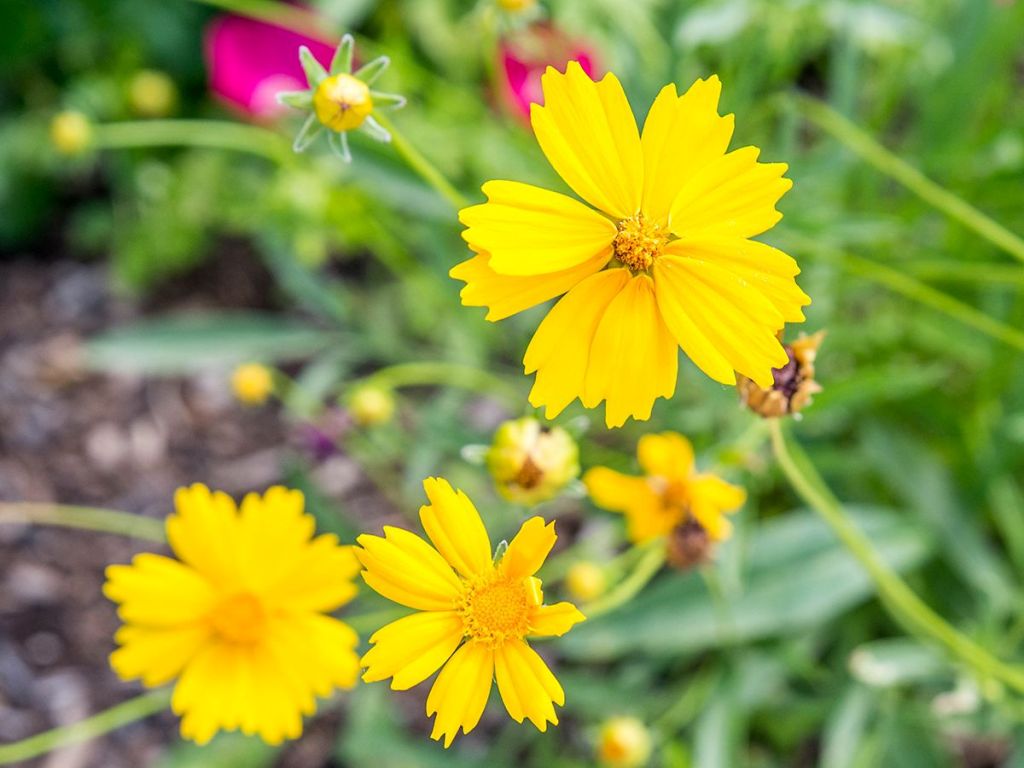
Family – Asteraceae
Genus – Coreopsis
Coreopsis, commonly called tickseed, is a plant that requires only low maintenance. There are dozens of varieties accessible in coreopsis species. They can be of both annual or perennial varieties. But, most of the varieties are grouped under perennial plants. Generally, they bloom during summer. The petals color may be red, pink, white, yellow, dark brown, maroon, and so forth. Such an interesting contrast of the bloom provides beauty to your garden.
Typically, Coreopsis is native to the United States, and to date, around 33 species are listed in USDA. Growing Coreopsis at your garden is much easier than any other plant. You can cover the seeds of Coreopsis plant with soil or perlite and provide a sufficient amount of light that needs for germination. Then, leave it for around 21 days. At the end of 21 days, you will find them attaining full germination. Watering the plants during germination is much important, as moist soil is much more suitable for germination.
Sowing plants in soil is an effective practice when you do it in moist soil. From growing Coreopsis to maintaining, it requires only a low effort. Being perennial plants, in most of the cases, they withstand extreme droughts and live without water for more than a week.
Fertilization is not needed. If needed, reduce the amount you use. Because fertilizing too much can greatly affect the production of the flower. Organic fertilizer is fine, as it favors developing the quality of the soil, supporting the microorganisms that reside in the soil.
If you can grow Coreopsis in your garden, you can enjoy the wildflower with long-lasting beauty. They are one of the best flower species that belong to the Asteraceae family. Taxonomists initially located the exact family on looking over its resemblance with Daisy’s flower.
3. Daylily
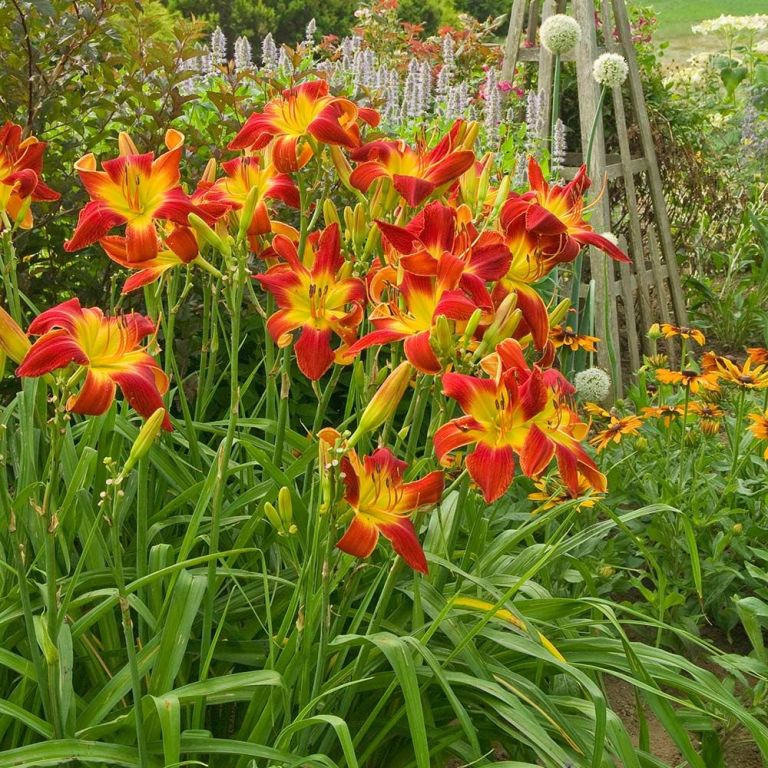
Family – Asphodelaceae
Genus – Hemerocallis
Gardeners love daylilies for more than centuries. Around 35000 hybrids are accessible right now. These amazing plants can produce about 200 to 400 blooms every month, particularly in its blooming season.
Planting daylilies is also easy, as you need to dig a hole and plant it.
They don’t require any artificial fertilizers. Organic fertilizers are adequate for growth. These perennial plants may need any type of fertilizer (at times) applied to enrich the soil and favor the microorganism that dwells in the soil. Choosing a site is very much important, as it needs 6 hours of sun every day. The plant enjoys morning sun than the noon sun.
Daylilies grow well in slightly acidic soil. But, they can be adaptable to almost all types of soil. Fully grown daylily’s leaves and stems are thicker and can withstand hard winds. They should be given additional care when it is in a sapling stage. Once it gets grown, low maintenance is enough. They are generally disease resistant, and the chance the plants getting affected by the disease is less. Basic 10-10-10 fertilizer during its planting season, i.e., early spring or early fall, is what it needs for professional growth.
Daylilies are drought resistant, and the need for water is also significantly low. Watering twice a week is appreciable. They are native to Central Europe. Moreover, the varieties are suitable for mass planting. Demanding less watering is one of its features. The reason is, hardy plants generally need less water. In the earlier days, they may need a high amount of water to adapt to the new surrounding. But once it has grown and become hardy, watering once a week is fine. The extensive root system of the plant is an added advantage that you can grow well in your garden with low risks and maintenance.
4. Black-Eyed Susan
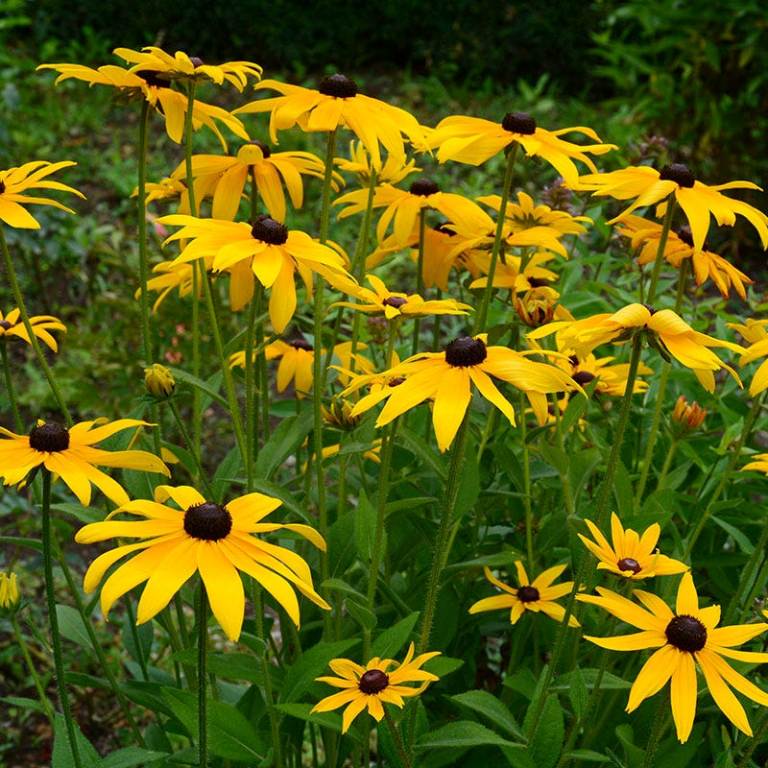
Family – Asteraceae
Genus – Rudbeckia
Botanical name – Rudbeckia hirta
Black-Eyed Susan plants have a long bloom, their planting season starts in late July and ends in the first frost and its flowers are bright yellow. Later, it changes to orange golden. Succeedingly, the size of the flowers increases from 2 to 9 inches. It is called early bird gold because of the extended blooming period. Double bright yellow color to orange-gold shade flowers own no restriction to attract pollinators. And it is suitable for almost all types of soil. No special care needs to get implemented.
Botanists categorize this perennial plant large bloomers since the blooming season is long. You can find different characteristics with varying shades of color. Usually, these plants are bedding perennial plants that get grown in the garden. Due to its long blooming season and productivity, many professional growers prefer it the most. Particularly, in spring or summer, the blooming period starts.
For germination, the average temperature needed is about 70 degrees Fahrenheit. If you are a professional grower, you can also go on with germinating seeds. Sowing the seeds is easy, as you just need to scatter the seeds in all areas. Initial days, the growth might not be desired. But, in the later stages, the growth will be immense with good flowering tendency. Deadheading technology implementation on these plants will improve the blooming rate. As per experts, only if you are good enough in deadheading, you can go on with it. Else, it may spoil the entire growth.
Black-Eyed Susan, propagation through division, is also easier. The propagation process needs only a little proficiency. Simply, you will have to take up the root part and cut it with a sharp knife. Later, you can work on the division of roots. Initially, grow it indoor with no direct sun exposure. After a few days, replant it, when it attains 12 to 18 inches. Providing adequate spacing between plants is important, cause the plants must breathe. Through proper spacing, each plant’s root can freely take water and minerals.
5. Peony

Family – Paeoniaceae
Genus – Paeonia
Peony is a perennial plant that is popularly known for its flowers. The beautiful blooming season starts during spring and summer. These are under use for more than a hundred years. The perfect time for growing it in the nursery beds is early spring. Currently, 6 popular types are accessible in the market. They include – anemone, single, Japanese, double, and bomb.
Peony requires full sun for up to 6 to 8 hours. The soil pH is neutral. It wishes to work on spacious and fertile. Spacing between the plants gets recommended to improve air circulation. It can easily obtain minerals and water from the soil. In the initial stage, you will have to water daily. But, after 2-3 weeks of planting, watering once a week or twice a week works fine.
Peony plants are pest resistant. However, they are sensitive to diseases. Utilizing a fertilizer could be an advantageous thing to get rid of diseases. Mixing a compost and little fertilizer will be efficient rather than using a huge amount of artificial fertilizers. The exact time to apply is July and when needed. Commonly, they are expected to get fertilized once a year.
Being too susceptible to diseases like what is verticillium wilt, ringspot virus, leaf blotch, Japanese beetles, nematodes, and tip blight, the plant may wither. Hence, only when you keep monitoring this issue in the earlier stages, you can perform well. It widely attracts insects, particularly ants. To tackle this, you can use some ant spray. The main reason behind ants gathering on Peonies are due to the honeydew that is present. If you find ants on your plants, don’t panic, it has nothing to do it other than collecting the sugary substance. Yet, don’t leave it as such. As soon as you notice it, you can apply some ant repellents. The plant possesses beautiful and wonderful cut flowers. So, you can use it for decoration.
Some common peonies you can buy for your garden are – early scout, firelight, Elsa saas, and the rare flower of frosty dew. Now, you can decorate and aesthetically develop your gardens.
6. Hosta

Family – Asparagaceae
Genus – Hosta
Hosta, otherwise known as plantain lilies, are perennial plants, which was brought to Europe in the early 18th century. Hosta possesses lanceolate leaves and is herbaceous perennial plants. Ordinarily, usage of granular fertilizers is effective, but no more in amount. Always limit the fertilizer usage of every perennial plant. They are susceptible to pests like snails, slugs, rabbits, and deer. Pest control has been limited in Hosta. For the same, fencing is one such way to prevent deer and rabbit attack. The most recommended varieties are Aureo Marginata, Hosta Albofarinosa, Honeybells, Hosta Capitata, and Hosta Clausa. Flowering colors are divers – blue, pink, purple, and white. Exact blooming time is summer.
Hosta does not require direct exposure to the sun for a long time, as it works well with the shady atmosphere. The normal pH of the soil is neutral. Being a perennial plant, it can survive in almost all type of soil. Hosta belongs to the Asparagaceae family. The blue coloring gets formes by the presence of glaucous waxy leaf coating. Shocking researches suggest that these plants are toxic to dogs, cats, and horses because of the presence of saponins in the plant. So, if you have a pet at your home, it is not recommended to grow it in your garden. On eating the leaves accidentally, your pet may suffer indigestion, diarrhea, and vomiting. At times, due to dehydration, it may die.
In 1900, a virus called potexvirus, also named “Hosta Virus X,” was identified in the USA. The symptoms include ink bleed marks in the veins of the yellow-colored leaves. On certain plants, it does not even show any of the symptoms, and it became non-diagnosable.
Though there are many complexities with Hosta, the bright colored flowers make the plant more appealing. Hence, buying it with proper understanding is appreciable.
7. Stonecrop
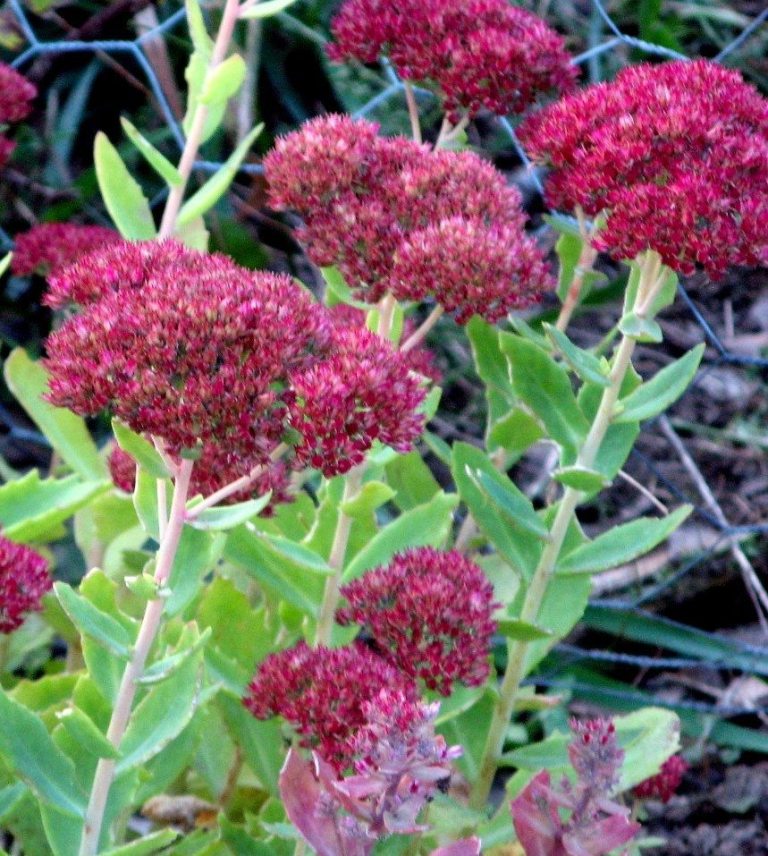
Family – Crassulaceae
Genus – Sedum
Stonecrop is easy to grow, as they possess both the succulents and perennial characteristics. It can grow on a hot, humid, and even rainy climate. They are drought-resistant too. Carl Linnaeus first described the taxonomic classification of Stonecrop in 1753. Earlier, around 600 species were there. But, now, only 400-500 are accessible. Certain species are expected to extinct.
Stonecrop is a notable perennial that arrives with a wide scope because of its shapes and sizes. From upstanding assortments to groundcovers, they make it perfect. Star-formed blossoms are as a rule in groups or showers that regularly change shading all through their sprout time. Stonecrop appreciates full sun; however, it will endure some shade.
According to the Animal Poison Control Center, the plant does not harm your pets like dogs. Hence, you are free to use it in your garden. The need for fertilizer is nil is Stonecrop. Some of the common species are Sedum Conzattii, Sedum Confertiflorum Boiss, Sedum Copalense, and Sedum Crassularia.
Stonecrops are known for being extremely flawless, clean, and smaller plants. The stalks only range up to 24 inches high. Stonecrops are so comfortable to grow and develop in so many forms and shades. Numerous stonecrops are developed as fancy nursery plants because of their fascinating and appealing appearance. The different species vary in their necessities. Some are cold-strong, yet, don’t endure the heat. Others need warmness to endure cold. A certain variety of stonecrops are edible, and others are toxic. Anyhow, to make wonder in your garden, you can buy it.
8. Yarrow

Family – Asteraceae
Yarrow is related to Northern hemisphere regions like parts of Asia, Europe, and North America. Most of the time, they get used as a feed for livestock in southern regions of New Zealand and Australia. The propagation mechanism is also lighter and straightforward in Yarrow plants. You have to utilize seeds for germination in nursery bags, later, transport the saplings to other conditions, where you can grow them. The division is another type of propagation method that you can use. As such many other perennial plants are drought resistant and require less amount of water, Yarrow also does the same. For more than centuries, the people of Greece used the woods of Yarrow to make weapons. Mainly, arrows were made out of this.
A lot of agriculturalists grow this in their farms. Because it can prevent soil erosion and retain water in the soil for a long time, it was introduced in New Zealand, and later it spread in the parts. During the middle ages, the flowers and leaves were used to make some liquid. They get widely consumed by cattle.
Vedic medicines use it in multi herbal preparations to cure gastrointestinal diseases. Though it is beneficial to humans, according to a survey, this type of plant is toxic to dogs, cats, horses, and other such animals. They cause increased urination, vomiting, diarrhea, and such things. It is extremely safe for humans, but, if you are a pet owner and you own a dog at your home, it is highly risky to grow this in your garden. However, if you can keep your dog away from the garden, it is fine for you to work on it.
9. Blanket Flowers
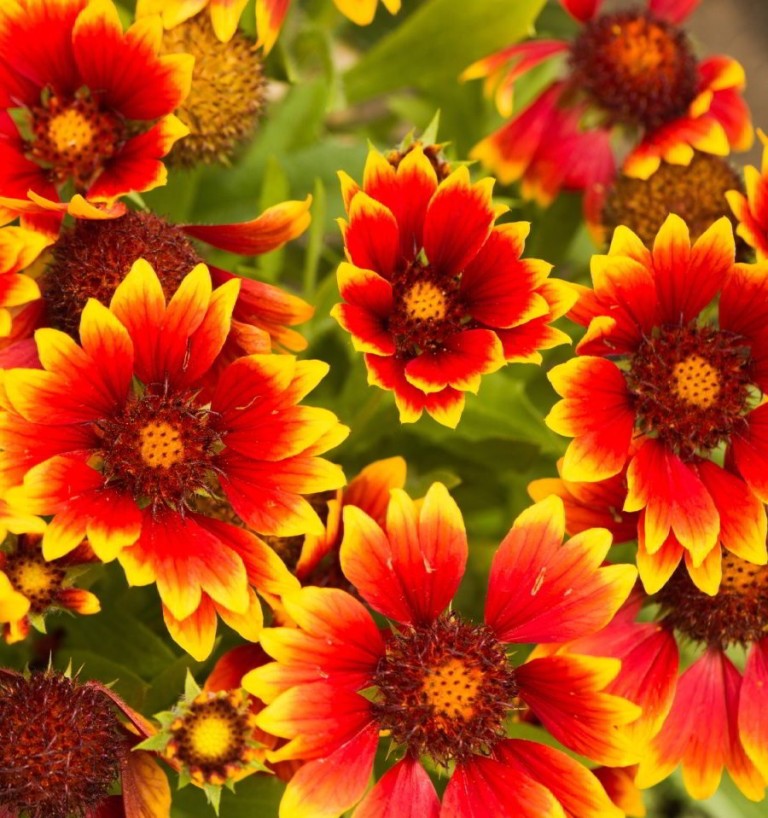
Family – Asteraceae
Genus – Gaillardia
Blanket flowers are native to North and South America. It is a perfect plant for ornamental use, though they are a local persistent wildflower. It is appropriate as a decorative wildflower. It gets employed as a food hotspot for pollinators, natural life, and domesticated animals.
No pests or diseases are found here. Root decay might be an issue in poor soils, particularly during heavy rains. Blanketflower gets resisted of drought and needs supplemental precipitation, especially throughout elongated warm and dry climates. It does great on a variety of soil samples, including topsoils to hard forms, and authorizes a soil pH scale from insignificantly acidic to moderately alkaline. They accomplish extraordinary growth in full sun, starting in early spring late summer.
Famous species are – Gaillardia Aestivalis, Gaillardia Amblyodon, Gaillardia Aristata, Gaillardia Arizonica, Gaillardia Cabrerae, and Gaillardia Coahuilensis. Soil tolerances applicable are acidic, alkaline, sandy, and loamy. They are highly salt and drought tolerant. It requires a spacing of 12 to 18 inches in between the plants.
Blanket flowers are appropriate for developing along the seashores to reduce the depletion of the soil. You can perfectly use it to implement it in a mass planting.
Because of the sticky furry pappus and seed stream, this species is genuinely hard to clean. Seeds are tolerably suitable, and life span can be expected for quite a long while when putting away at great temperatures.
Blanketflower favors dry, open spaces in grasslands, mountain lower regions, and alongside the road and railroads. A wide assortment of pollinators and gainful creepy crawlies depend on the blanket flower as a food wellspring of dust and nectar. It is a typical nectar source for the grown-up phase of the butterfly.
10. Astilbe
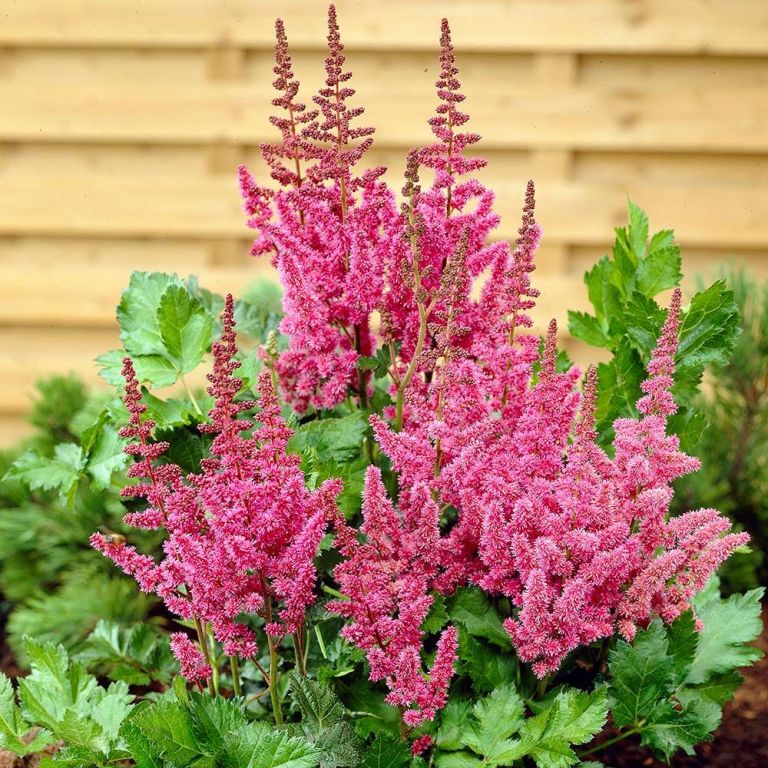
Family – Saxifragaceae
Genus – Astilbe
Astilbe is an extraordinary plant for tropical and temperate regions. To grow them, the soil should be reliably wet. If the soil dries out, the plants will evaporate and turn earthy colored. Astilbe assortments differ enormously in size. They react well to standard taking care of. As plants start new development in spring, sprinkling a tablespoon of 10-10-10 compost around the base of each bunch is beneficial.
Watering quickly to disintegrate the granules and move supplements to the root zone gets followed. They require decidedly ready soil that is high in natural matter. Genuinely, it is simple to develop by and large broad. They require a lot of water, especially during the last initial days of growth. Astilbes are also susceptible to Bacterial Leaf Spot, Cercospora Leaf Spot, and Powdery Mildew.
The type of spring planning gets explained as follows – Astilbes come as either exposed root crowns or in holders. Plant the crowns in the late-winter. Pruned plants can be planted whenever up through mid – August. Sprinkle a bunch of an all reason slow-acting granular compost on the soil around each plant. Toward the start of each new season, on the off chance that you have not effectively done as such, cut back all Astilbe stems and dead foliage in the late winter, and spread new mulch if it is expected to get that layer to 2 to 3 inches down.
Astilbe is genuinely simple to develop and is tough in zones 4-9. It grows best in prolific soil. In the scene, it is a late spring blooming plant that is tough to USDA zones 5-8 and leans towards the incomplete shade. It is a requesting plant in that it requires wetness. The appealing compound leaves and crest-like inflorescences of Astilbe have made it the fifth top of the line herbaceous perennial plant in the US and Canada. Having it in your garden is worthwhile.
11. Catmint
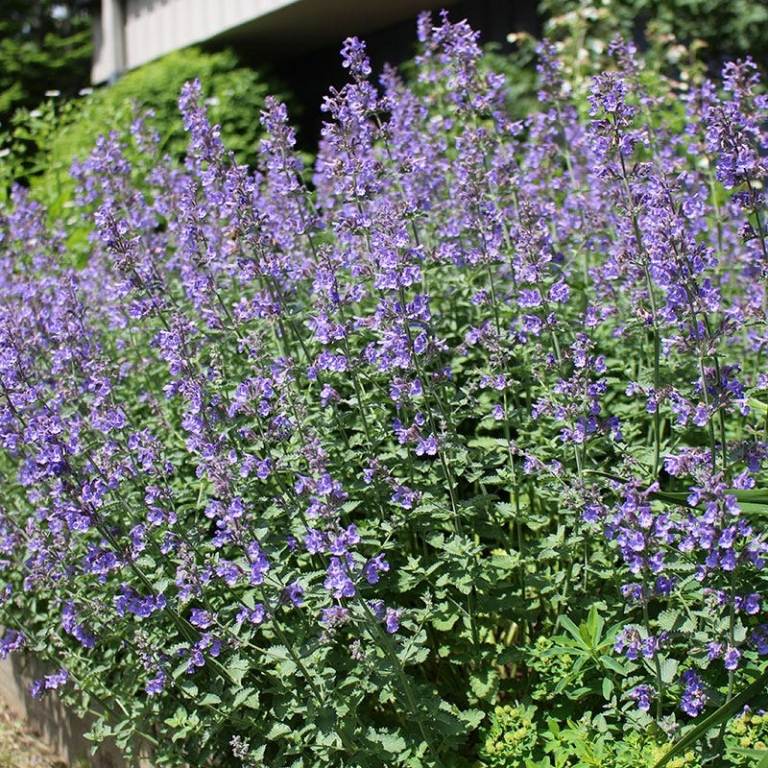
Family – Lamiaceae
Genus – Nepeta
The class Nepeta is an individual from the mint family, of which there are around 250 species. These are the types that are often sold, and they perform better in the nursery as a blossoming perennial. Catmint’s scope of developments makes them flexible for various settings, from nurseries to home gardens. The catmints function admirably when planted in blend with the customary crossbreed. They can be interplanted with spring-blooming bulbs, especially alliums, they can veil the uncovered lower parts of the flower hedge or cover the remaining the foliage of the bulbs.
Most have longer and bigger bloom spikes in shades of purple, blue, pink and white are accessible. The blossoms show up in pre-summer to late-spring, last for a long time, and often rebloom all through the developing season. Their dark green foliage is appealing, and a considerable lot of these collections are less forceful, making them great partner plants.
Catmints repel deers and rabbits. Furthermore, they do pull in pollinators and other natural life, for example, honey bees, butterflies, and hummingbirds. Most Nepetas can flourish in full sun or shade and are very much depleted. They favor a few considerate disregards and don’t require composts and rich soil. Catmints have a mounding propensity and can be without any problem partitioned each three to four years. Shearing back plants by around 33% after their first blossoms blur will support the second round of blossoms in pre-fall.
Catmints are trustworthy nursery plants valued for their abundance of blossoms, long period of blossom, and attractive foliage. Plant specialists likewise favor catmints for their simple culture and scene flexibility. Catmint blossoms are grouped in the many-flowered category of perennial plants. Blossom shading ordinarily runs from purple-blue to lavender and white, but Nepeta Govaniana has yellow blooms.
12. Coral Bells
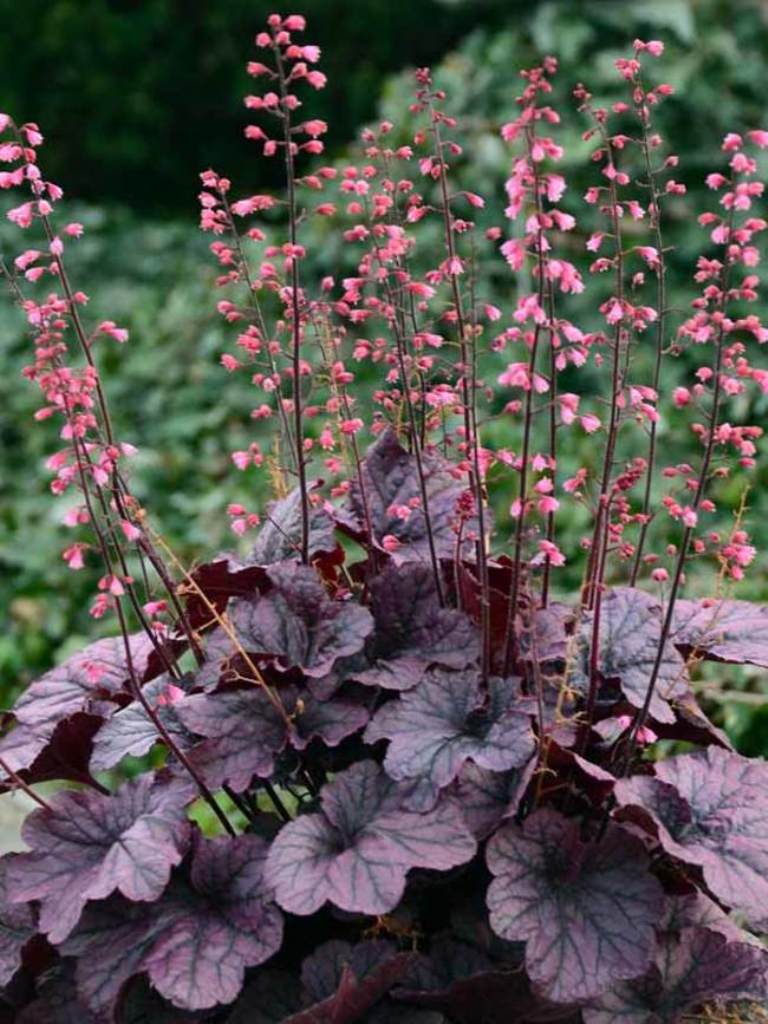
Family – Saxifragaceae
Genus – Heuchera
Scarcely any perennials have detonated very likely to coral bells, or Heuchera. Since the mid-1990s, an amazing number of cultivators have been acquainted with coral bells in their gardens. Heuchera is an individual from the saxifrage family (Saxifragaceae), with around 55 species local to North America. Most coral bells are hardy in Zones 4-9.
They are herbaceous evergreen perennials with spreading abilities. A significant part of the energy development of coral bells today is because of the improvements in foliage color. Coral bells develop best in light shade and damp, all around depleted natural soils. They will develop in full sun if the soil is kept reliably moist, yet great drainage is fundamental to fair wellbeing.
Heucheras are not overwhelming feeders but rather will profit by a light use of compost in spring.
Mulching with a layer of natural issue, be cautious about not covering the focal point of the plant. It will help in shielding from dampness dissolution. Heucheras are not tormented with attacks from slugs or snails, and even the rust is not an issue for some Heuchera, particularly those with yellow, gold, or orange foliage. Decreasing/evacuating the contaminated foliage along with a fitting fungicide is the best control. Expanded temperatures and drier summer conditions should hinder the fungal growth too. Try not to water from overhead.
Coral Bells are a herbaceous, evergreen, long-lasting plant that bunches to 16 inches across. Its leaves are around 2 creeps over, adjusted, toothed or scalloped, and conceived on 4-inch long petioles. In spring, coral bells produce 18-inch tall, open panicles bearing a variety of modest, ringer molded blossoms. These species produce red blossoms, as raisers have expanded the ordinary red blossom to pink, coral, and white shades.
Heucheras can be utilized in rock gardens or as fringe plants in blossom beds. They are characteristical and wonderful. Blend plantings with Coral bells give the architect differing leaf shapes and shades, development abilities to give tallness, completion, and a hanging impact over the edge of the section.
13. Aster

Family – Asteraceae
Genus – Aster
Aster is the most differing group of angiosperms and has an overall appropriation. About half a portion of the species are native to the Old World, and rest are native to the New World. It incorporates annuals, perennials, ground covers, plants, bushes, and a couple of little trees. The plants live in pretty much every possible condition from the beach to peaks, from woods to scours and meadows, from wetlands to deserts. Vegetative highlights are profoundly factoring with numerous diverse leaf structures, branch designs, root frameworks, and course of action of blossoms.
Most individuals from the Aster are effectively recognized by the blossom structure, which is that numerous blossoms are massed together in a head that resembles an enormous solitary blossom. Some species are an exception with tongue-molded beam blossoms; others resemble small starlike plate blossoms. However, an extraordinary number have a mix with beam blossoms around the head, taking after petals, and circle blossoms in the inside. A couple of other blooming plants mirror this structure as with the blooming.
Disk blossoms are the best to utilize because they’re quite often fruitful with all the bloom parts. The ordinary circle bloom is little enough that a decent hand focal point or a magnifying lens is expected to help to see all the structures. Each plate blossom has a mediocre, one-seeded ovary that later matures into an achene. The sepals and petals are in this way on the head of the ovary. Sepals are profoundly altered into a pappus, comprising of hairs or scales or awns. Petals are joined at the base into a cylinder beat by five, starlike projections. Clans depend on different qualities, including the scent of leaves and sort of pappus. They are less likely to attack by pests. You can grow it in your garden because the maintenance time and cost is too low.
14. Shasta Daisy
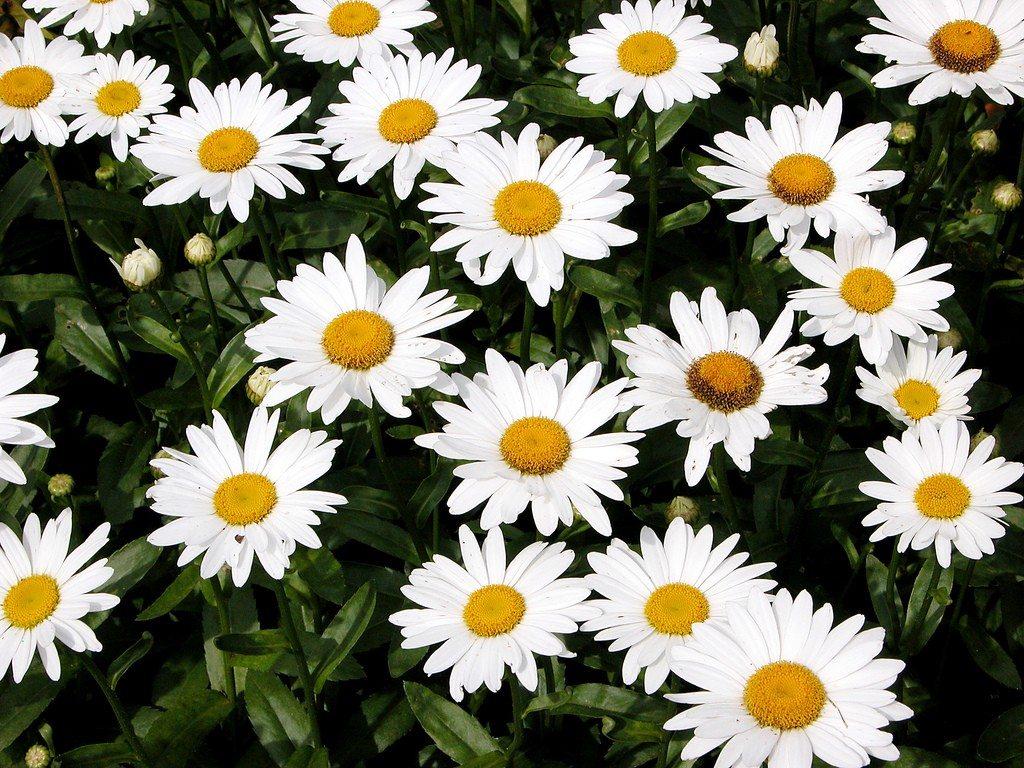
Family – Asteraceae
Genus – Leucanthemum
Shasta Daisies comes with shades of white, cream, and yellow makeup of petals. Blossom heads can run somewhere in the range of one to four inches in width. Shastas have a clustering ability for development, so it’s a smart thought to isolate them each a few a long time. In Oklahoma, they can endure light shade, particularly in the sweltering summer months. It is likewise an ingenious decision to slice blossom stocks to advance further sprouting and the life span of vegetation.
Shasta Daisies aren’t known for some creepy, crawly, or infection issues settling on them an incredible decision for low to no synthetic planting. The plant can get utilized anyplace to light up the presentation of your scene. In the same way as other individuals from the Asteraceae, Leucanthemum flowers are made out of petallike beam florets and tube-molded circle florets. Yellow plate florets, which make up the eye of the flower, are enclosed by the conspicuous beam florets. Flower inclinations differ from the exemplary daisy structure to peaked or anemone-focused (border plate florets.
Blossoms may additionally, set apart by an abundance of restricted beams that give the blooms a shaggy appearance. Blossoms run from 2 to 5 creeps in breadth and start showing from pre-summer. Shasta daisies lean toward fruitful, well-drained soils in full sun. Crown decay will probably happen under overwhelming winter mulch. A free covering of conifer branches, pine needles, or entire leaves applied after the ground is solidified will prevent it.
Shasta daisies are commonly chilly strong in USDA Zones 5-8. Since Shasta daisies are regularly brief perennials, isolating the bunches at regular intervals will keep plants strong and may increase their life expectancy. The benefit from standard deadheading to draw out flowering, you need to operate clearly.
15. Geranium

Family – Geraniaceae
Genus – Geranium
Geranium is one of the significant fragrant plants, yielding a fundamental oil which is exceptionally valued for its significant and solid rose-like scent. Boss constituent of the oil is geranial and citronellol. The oil likewise contains α-pinene, β-pinene, αterpinene, myrcene, α-phellandrene, limonene, cis-ocimene, trans ocimene, p-cymene, terpinolene, cis-rose oxide, trans-rose oxide, Methone, trans-linalool, iso-menthone, caryophyllene, geranyl acetic acid derivation, nerol, geranyl formate, geranyl butyrate, and geraniol. Unadulterated geranium oil is right around a scent without anyone else and mixes well with every other fragrance. It is generally utilized in scenting cleansers.
The business oil of geranium is gotten from Pelargonium graveolens of the family Geraniaceae. There are around 600 types of the variety Pelargonium, a large number of which have a pleasant scent. Different species like P.radula, P.fragrance are of lesser significance and have not achieved any business criticalness. Geranium is a shaggy, sweet-smelling plant. The stem is tube-shaped, woody at the base, pubescent, green when youthful, and turning earthy colored with age. The leaves are interchanging with 5 essential projections and optional flaps. Leaves are profoundly sweet-smelling.
The inflorescence is umbellate and furry. The blossom is androgynous and hypogynous with a pink corolla. The frequency of insects and disease attack isn’t serious in the geranium crop. Be that as it may, it is seen as influenced by dry ailment, brought about by the Fusarium species, and Botrydeplodia Theobromae, which are soil-borne.
Geranium gets gathered 4 months in the wake of relocating when the leaves start to turn light green and display a change from a lemon-like scent to that of rose. The yield ought to get gathered using a sharp sickle and sent for refining right away. After each collect, hoeing, manure application, and water system are finished by the timetable.
16. Bleeding Heart

Genus – Lamprocapnos
Family – Papaveraceae
Sprouts of the bleeding heart plant show up in late-winter, enhancing the nursery with heart molded blossoms borne on angling stems. The bleeding heart the plant likes to be planted in natural soil. Working with fertilizer into the zone previously planted is beneficial. Natural mulch separates after some time to flexibly supplements and holds dampness. Developing the plant needs a cool, obscure boundary for ideal sprout in hotter southern zones.
Bleeding heart is a Herbaceous perennial that starts to yellow and wilt away when care is not given. So, try not to evacuate the foliage before it turns yellow or earthy colored. Bloom care incorporates ordinary preparation of the developing plant. At the point when foliage develops in spring, you may apply fertilizer. It is a significant advance in developing the plant as it energizes more and longer enduring blossoms.
Many are amazed that developing bleeding heart is so basic. When you know about how to grow them, you find them difficult, and deep care needed part. Seeds of the plant may add more plants to the nursery, yet the surest strategy for the spread is to separate clusters at regular intervals. Planting these into different regions of the nursery for a late-winter show is widely followed.
There are numerous plants, including bleeding hearts, profit by mulching, particularly those that develop in the sweltering sun, which dries out the dirt rapidly. Spread a 2 or 3-inch layer of some natural material such as dried grass clippings, wood chips, or hacked leaves on the soil around the base of the plants to debilitate weeds, help the soil hold wetness, and keep the roots cool. As it breaks down, mulch contributes natural material, and the gainful living beings that live in the soil will improve it.
17. Dianthus
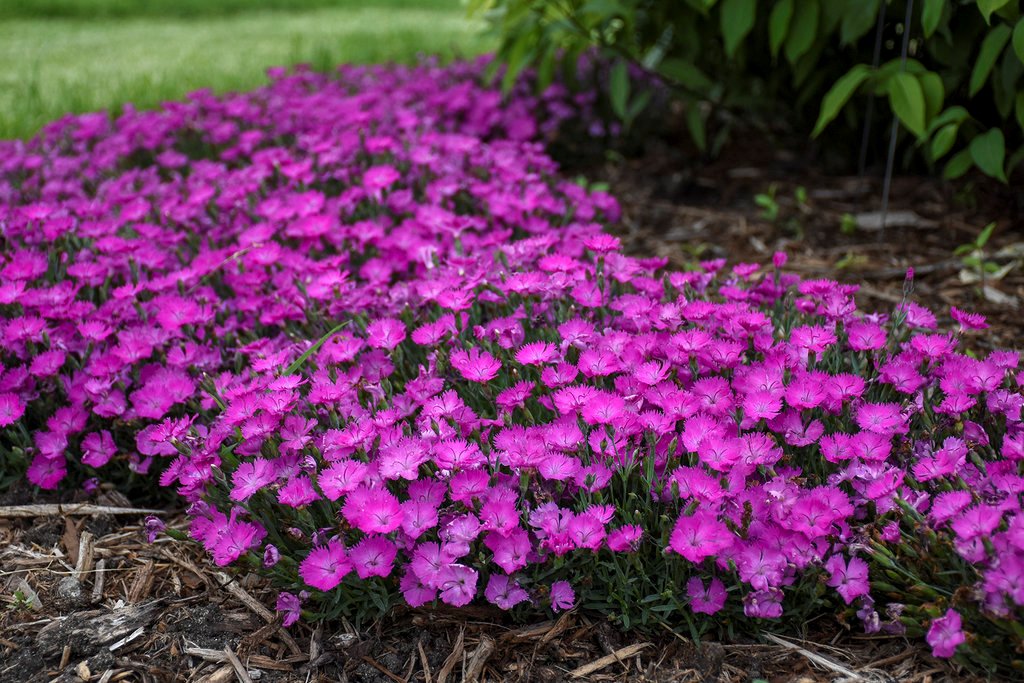
Family – Caryophyllaceae
Genus – Dianthus
Dianthus is a genus that has more than 300 species and from which carnations, pinks, and sweet Williams are grouped. The genus comprises of annual, biennial, perennial, flowering, short, long, woody, and so more varieties of plants. You can grow them indoor, outdoor, container, farm, and wherever you wish to do so. Individual species may have common names such as maiden pink, clove pink, cottage pink, cheddar pink or grass pink. Interestingly, the word “pink” in the common name does not refer to the typical flower color but rather to the frilly margins of the flower petals that appear to have been trimmed with pinking shears.
Before working on Dianthus, rowers should think if they can buy plugs or use seeds of their own, and lace it for germination. They also face several challenges while growing their plugs. At the time, do consider employment, cost of raw materials, wages, facilities, equipment availability, and so on. For the same, it is vital to plan before implementing it.
For the best results, purchase high-quality seeds from a reputable supplier. Whenever you purchase the plugs, carefully examine the seedlings for proper nutrition, insect, and disease problems. Before carrying on transplantation, you need to appropriate the quality and examination of the difficulty. Only then, you can transplant it with ease and perfection.
Scheduling what gets to implemented and what’s not is critical, and you need to consider factors like season, weather, container size, condition, temperature, and humidity. When done right, the productivity is high. The average production time in plug flats for most cultivars is 4 to 6 weeks. Overall, it may take around 1-2 months. But, the methodology of buying from the nursery is fine, and you use it in your garden.
18. Russian Sage
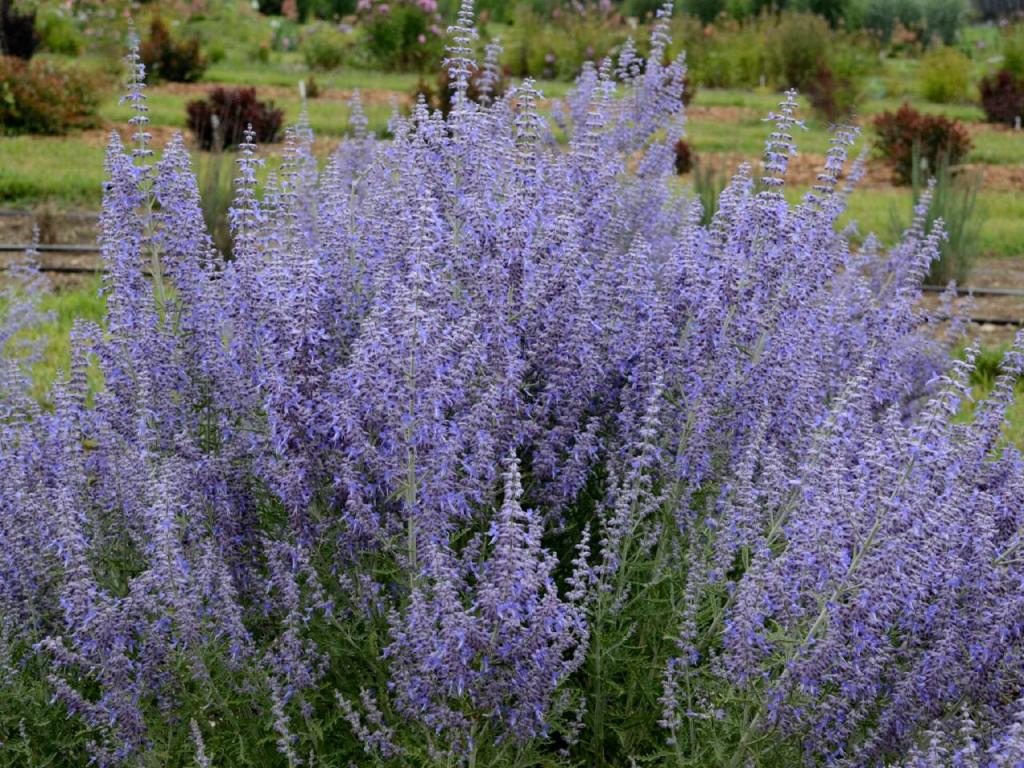
Family – Lamiaceae
Genus – Salvia
Russian sage is handily developed in dry to medium and in much-depleted soils. Soil seepage is particularly significant, so maintaining a strategic distance from wet or ineffectively channel soils is a must. They have a great dry spell resilience and like to develop in full sun. Best blossoming happens in full sun areas.
Whenever developed independently, they may need help, as the branches may toss over. They assist in the mass plantation. When built up, almost no consideration is required. Dispersing a bunch of general-purpose manure or fertilizer pre-winter may help in the growth of the plant. Propagation of Russian sage plants gets done by isolating the clusters or taking cuttings in spring. Partitioning the bunches each four to six years revives the plants and assists with controlling their spread.
The enormous consideration of worry with these plants is pruning. An opportunity to prune Russian sage relies upon what you are searching for in your scene. If you wish to give your plants a tidier appearance in winter, at that point in the fall, slice the plants back to 12 inches tall following the principal hard ice. At the point when new spring development starts to rise, prune out any dead branches and slice the old stems back to simply over the most minima arrangement of leaves.
Russian sage can be cut back yearly. The plentiful, spiky groups of blossoms sprout from pre-summer until harvest time, effectively darkening the leaves. The plant starts to open in pre-summer or summer, shear off the best 33% of the stems to support upstanding development.
19. Hellebore
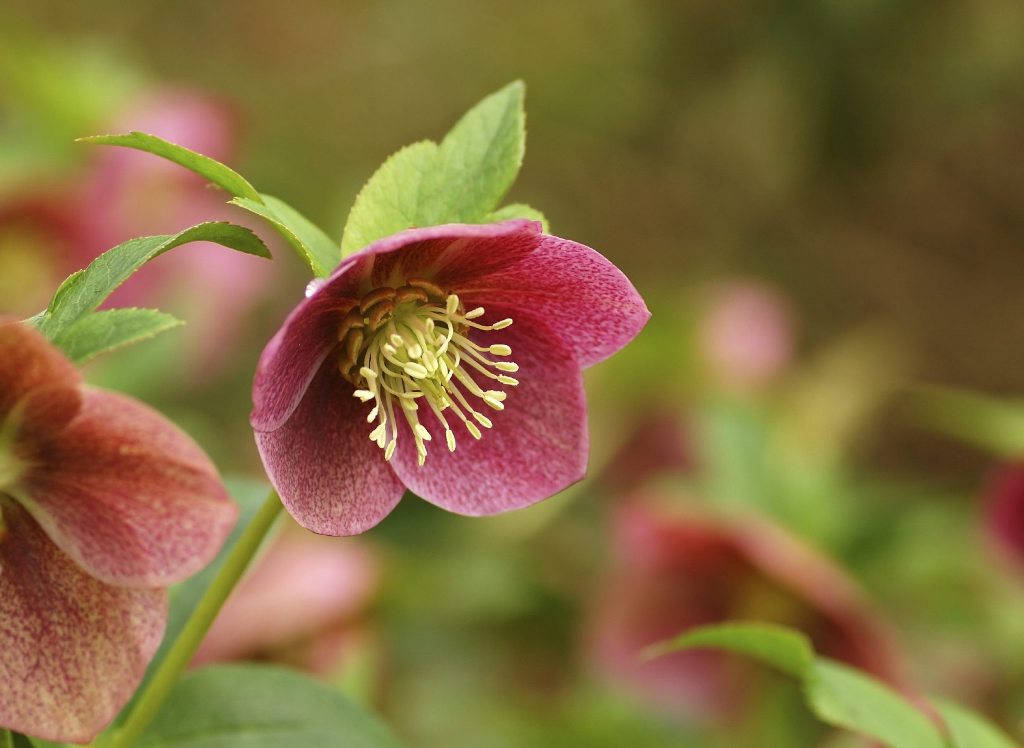
Family – Ranulaceae
Genus – Helleborus
Hellebore incline toward saturation, but not needed wet soils in separated daylight to thick summer cover. They work well in tropical regions. Hellebores is a deciduous plant. They are suitable to develop in almost all types of soil. There are no limitations to the soil as well.
Preserving moisture is a must. Hence, make certain decisions to add mulch around the plants to preserve dampness. They are gross feeders and develop the greater part of their supplements in the spring and summer. Coordinated discharge composts, for example, Osmocote can get applied in the spring and again in late summer. It will showcase the plants into full blossom. Each month utilization of fluid plant nourishments can get tracked to involve in pretty good analyzing.
Hellebores have hardly any irritations or illness issues. Aphids can be problematic. However, they are not viewed as a significant issue. Washing the plant with water generally deals with them. Easy airflow and moist conditions can prompt sessions with Botrytis. However, this is effortlessly constrained by legitimate dividing. Rodents, bunnies, and deer won’t eat hellebores.
All parts are toxic and ought to be maneuvered carefully. Hellebores can be produced from seed or by divisions. Under perfect conditions, they may self-sow, and young seedlings can be relocated in late-winter. It takes 2-4 years for transfers to blossom.
20. Giant Hyssops

Family – Lamiaceae
Genus – Agastache
Giant hyssop is an elaborate mainstream plant. Since it requires unsettling soil influence for fruitful foundation, standard clearings must be made and kept up through tree-diminishing, end of contending vegetation, or by deferring characteristic progression cycles. Populaces of giant hyssop will, in general, be fleeting since they are effectively out-contended. Along these lines, field plots should be restored each 3–4 years for a fuller look.
To support more enthusiastic development, cut 2–6 parts in from the plant. Giant hyssop is a late-blossoming, native lasting spice of the mint family. It can develop strangely tall for a mint, up to 6 feet, with diamond-shaped stems, sweet-smelling foliage and blossoms, and energetic stolons. The stems are erect and structure bunches.
Upper braches might be purplish. The thickly extended inflorescence is a 1–6 in the terminal, ceaseless, or interfered with blossom spike or raceme. Such a plant, as a rule, has a few spikes. The highest points of the spikes form into bloom, and two sidelong branches create under the blossom from a typical hub, giving the inflorescence a balanced appearance.
The blossom groups endure all through the winter. An individual blossom is ¼ in long, 15-nerved tubes that are lavender to pale pink. The upper lip has 2 flaps and extends forward, and the lower lip bends downwards with 3 flaps. The individual flaps are 3-nerved. Not all blossoms open simultaneously. The blossoms contain 4 stamens that stretch out past the blossom. Owning to all these wonders, they get a place in the top list.
21. Dense Blazing Star
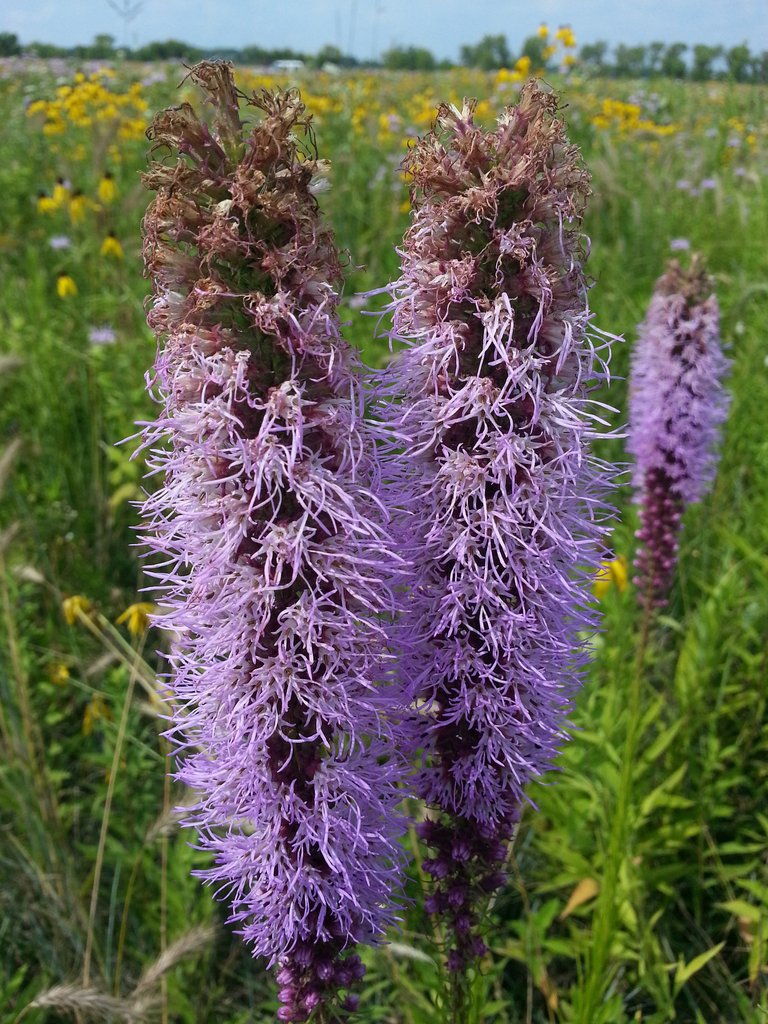
Family – Asteraceae
Genus – Liatris
The thick, bursting star is otherwise called the Liatris Spicata or grassland gayfeather. It is a lasting blooming plant from the sunflower and daisy group of Asteraceae. The species is native to Eastern America, where it becomes obvious in saturated grasslands and sedge mountains. The plant has purple blossoms with tall spikes resembling a jug like structure. These blossoms resemble that they develop from 1 to 5 feet in stature.
Tall spikes develop in toughness zones 3-8 extending from the midwest of the eastern coast, eastern and western Canada. The most widely recognized species are Alba and Florian white, which grow up to 45cm of ½ feet. The Floritan white will be white-blossoming cultivators. Callelepsis with long stem is useful for cut blossoms. They blossom in July through August or September, and it depends on the scope of requirements.
These plants require full sun and very much depleted soil. It is important to forestall the gardening soil and through which these plants allude to more dampness fertile soil. These plants can endure up to some reach out of shade and air, and it is broken in winter days. These plants can be brought from seeds, and they are even purchased from plant nurseries.
After setting the seeds, the germination happens between 28-45 days. The space between each plant ought to be in any event, 12-15 inches. Dividing permits the free progression of air and full sun between them. At the point when the seeds begin to develop the blossoms, it doesn’t show up until it is the subsequent year. Plants lean toward soil with an elevated level of calcium and magnesium and with a low degree of potassium and phosphorus. The blossoms of these plants have a vanilla fragrance when they are dried. These plants pull in pollinators. It doesn’t permit creatures like deer to consume them.
22. Lily

Family – Liliaceae
Genus – Lilium
Lily is a typical herbaceous blooming plant. The class nearly contains up to 80 to 100 types of blossoms in the globe. Lilies are alluded to as decorative blossoms and are widely hybridized. Species like hemerocallis and different types of family Amaryllidaceae are additionally considered as lilies.
The genuine lilies are perennial plants that have verdant stems, textured bulbs typically tight leaves, and single or bunched roses. The bloom has six petals and resembles a trumpet with a lengthened cylinder as in Madona lily and Eastern lily. Certain other similarities of lilies are found in different plants; some appear as though a turban and some may take after like an open cup or a bowl-formed one. The blossoms of certain species are exceptionally fragrant and are in a wide assortment of shades.
The greater part of the lilies extend from 30 to 120 cm, and some sort even surpasses 2.5m in stature. It is accepted that first, they have developed lilies in Asia during the two thousand years BC. The blossoms are likewise utilized for restorative purposes. The bulb of the Madona lily is utilized for medication and food. The old Greeks and Roman developed it for therapeutic medicines.
In the eastern pieces of Asia, they were developed as food and for fancy purposes. The majority of the types of lily sprouts in July or August. The blossoming time of certain species is in pre-summer and the staying in pre-fall or late pre-winter. The various types of lily shifts in the measure of daylight required. Due to the vastness of lily, it can be one such plant to be placed in your garden.
23. Lavender

Family – Lamiaceae
Genus – Lavandula
Lavender is native to the nations that are flanking the Mediterranean. They are generally regular in the sort of spice plant, as a result of their aroma and alluring blossoms. They get grown for the manufacturing of oil since it gets utilized differently. The oil from these blossoms has a decent fragrance and is utilized in making scents, cleansers, and different beauty care products. The ancient Greeks and Roman used lavender in their showers. Some of the time, they additionally get used as seasoned refreshments and desserts and are considered as medication.
Lavenders are little evergreen bushes with dark green aged leaves and purple blossoms. The scents of this blossom are brought about by shinning oil inserted alongside the little star-molded trichomes that spread the plant’s leaves, blossoms, and stem. Most developed lavender among them is the English lavender, French lavender, and the Wooly lavender. They additionally have a shading named after the bloom as a result of its special shading. The most appropriate conditions for lavender to prosper are dry, very much depleted, or gravelly soils in full sun.
Compost isn’t significant for these, and you may utilize a little sum. The required part is acceptable to air dissemination. It develops well on soils that have a pH estimation of around 6 to 8. The collect time frame changes depending on the indented use, and they are hand-reaped. Lavender is additionally used in cooking. Because of their rich fragrance, they give citrus and a sweet note. Their buds and leaves are dried so they can get used to making tea.
24. Phlox
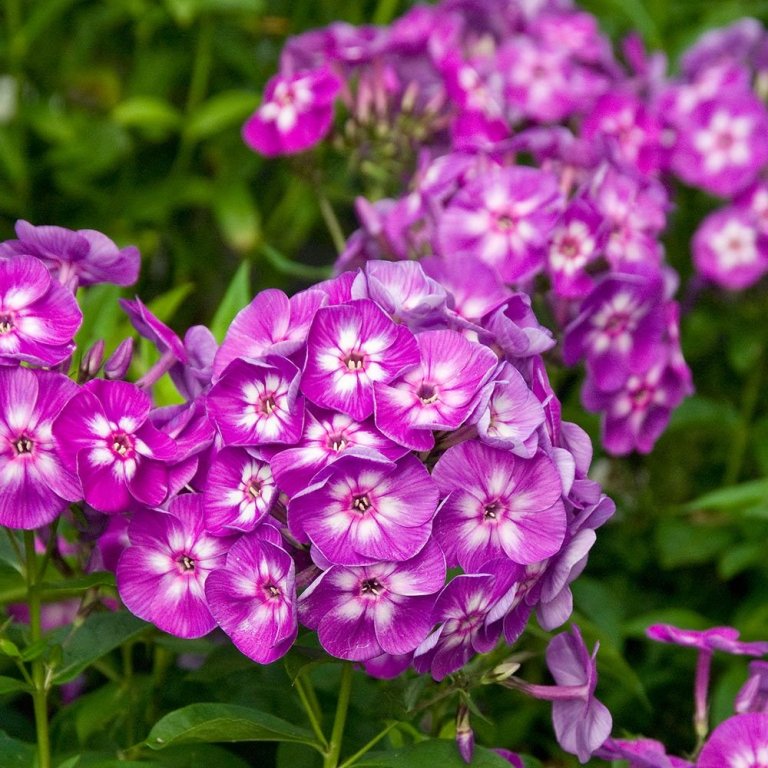
Family – Polemoniaceae
Genus – Phlox
Phlox, in Greek, means flames. It is a higher type plant genus with around 67 varieties of perennial, annual, and biennial plants. They are generally found in North America in assorted living spaces from the snow-capped tundra to the open forest and grassland. A few sprouts in spring, summer, or harvest time. They are found in numerous types and shades, and the accessible hues are light blue, violet, brilliant red, or pink, and a large portion of them are fragrant. Treated blossoms produce a moderately huge seed.
The natural product is a longitudinally dehiscent case with at least three valves as they may even detonate independently. A few types of phlox are developed essentially in gardens, whereas species from the snow-capped tundra needs full sun and great waste. Those from open Woodlands require fractional shade and soil wealthy in humus. The ones at the waterside require full sun and dampness rich soil.
Phlox gets predominantly developed in the nursery, as they effectively draw in butterflies to them. As long these species get 6 hours of daylight, there won’t be an issue.
Different plants develop well with phlox. So, there won’t be an issue of developing them in the nursery alongside different plants. Summer phlox here and there comes up to a tallness of 1.5 m. The yearly phlox grows up to 45 cm. Blue phlox and the enduring phlox grow up to similar tallness starting at 45 cm.
Watering of phlox is required just a week and consistently make sure to keep them saturated from time to time. Most types of phlox should be isolated every 2 or 4 years. The best ideal opportunity to isolate is, relocate in mid of spring. Phlox isn’t unsafe for the pets you own in your homes.
Closing Note
We hope you enjoyed exploring the various types we discussed. It is indeed an informative and much-needed content. Now, step out, and enhance your garden prettier than the actual. Choosing one perennial flowering plant from the above list saves your time from searching for things. We hope this article suffice your requirements.





